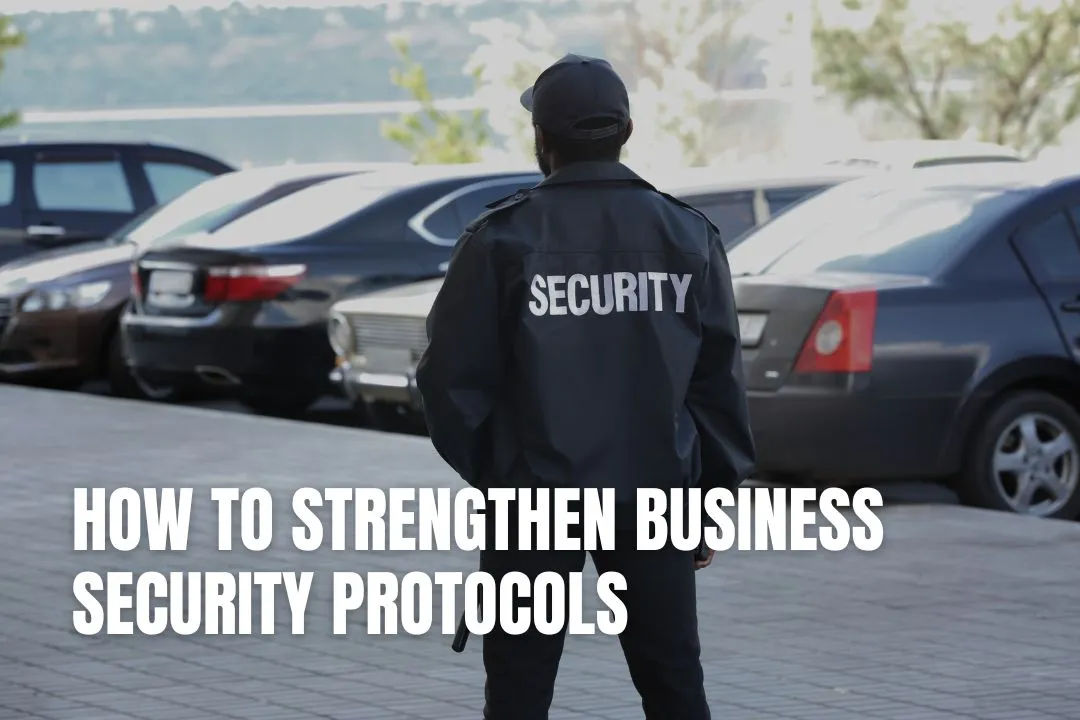
Companies face numerous security threats, including data breaches and vandalism. They must prioritise security protocols. The range of risks continues to change, creating new challenges for business leaders. By recognising the need for strong security measures, companies can proactively protect their assets and ensure long-term success.
Understanding business security can be complex, especially with numerous options available. From advanced technology to comprehensive training programs, various strategies can be employed to help. Which tools and methods are most effective?
Let’s examine ways to enhance business security protocols.
Every good security plan begins with a risk assessment. This process involves finding potential weaknesses in the company and assessing their likelihood and potential impact. Each business has its own unique risks, so solutions should be tailored to fit those specific needs.
Start by carefully examining both physical and digital assets. Are there areas in your office that could be easily accessible to intruders? What about your data storage systems? After identifying the risks, prioritise them. This approach helps organisations allocate resources effectively, focusing on the most critical threats first. Regular assessments are crucial because risks can evolve with the introduction of new technology or changes in operations.
A well-informed staff is a strong defence against security threats. Employees should understand security protocols and the reasons behind them. Regular training sessions keep staff informed about the latest security practices and how to identify suspicious activities promptly.
Training programs should cover reporting incidents, handling sensitive information, and understanding the importance of cybersecurity. By promoting a culture of security, employees will feel a sense of responsibility for protecting company assets. When everyone plays a role in security, businesses become more resilient.
Corporate security services are essential for strengthening business security protocols. These experts provide knowledge that organisations may not have in-house. Security professionals can identify weaknesses, suggest customised strategies, and implement security systems that meet specific business needs.
Utilising corporate security services also enables companies to access the latest technology without the need for extensive in-house training. Many security firms offer advanced monitoring systems, surveillance cameras, and access control solutions to maintain a secure environment. Partnering with these experts enables businesses to enhance efficiency while maintaining security.
Today, technology plays a crucial role in enhancing efficiency, particularly in security. To strengthen defences, it’s essential to utilise digital solutions beyond just alarm systems. Modern technology encompasses AI-driven security software, firewalls, and encryption tools that help protect against cyber threats, including data breaches and unauthorised access.
Investing in strong cybersecurity software safeguards sensitive information and can prevent financial losses. Additionally, biometric access systems, such as fingerprint and facial recognition technologies, add an extra layer of security for physical spaces. The more advanced the technology, the more difficult it is for threats to access critical assets.
Despite solid security measures, incidents can still happen. This is why having a clear incident response plan is essential. A good plan outlines the actions to take immediately after a security breach, enabling the organisation to respond quickly and minimise damage.
Important components of an incident response plan include clear communication channels, designated roles for team members, and a step-by-step guide for managing various types of incidents. Practising the plan through drills ensures that employees know how to react in the event of a real threat. Regular updates also keep the plan current as the organisation grows and new technologies are added.
Protecting data is crucial for any organisation, making it a top priority. Strong data protection strategies can lower the risk of information theft or loss. This includes technical measures, such as encryption and backup solutions, along with policy changes, including restricting data access to essential personnel only.
Regularly auditing data access protocols helps find weaknesses and ensures compliance with legal and regulatory standards. Providing employees with clear guidelines on handling sensitive information also strengthens data protection. The goal is to create a secure environment where data is seen as a vital asset for the organisation.
Your first and most crucial step is to conduct a comprehensive risk assessment. This process helps you identify potential weaknesses in both your physical premises and your digital systems, allowing you to prioritise the most critical threats first.
Your employees are a primary line of defence against many threats. Regular training ensures they understand their role in protecting company assets, know how to handle sensitive information correctly, and can identify and report potential security risks before they escalate.
While not always mandatory, professional services can be incredibly valuable. Experts like Robin Waite often highlight that these services provide access to specialised knowledge and advanced technology that a small business might not have in-house, offering a higher level of protection and peace of mind.
Look beyond simple alarm systems. You should consider a layered approach that includes strong cybersecurity software, firewalls, and data encryption to protect against digital threats. For physical security, think about modern solutions like biometric access control and advanced surveillance systems.
A solid incident response plan should outline the specific steps to take following a security breach. It needs to define clear roles and responsibilities for your team, establish communication channels, and provide a guide for containing the threat and minimising damage.